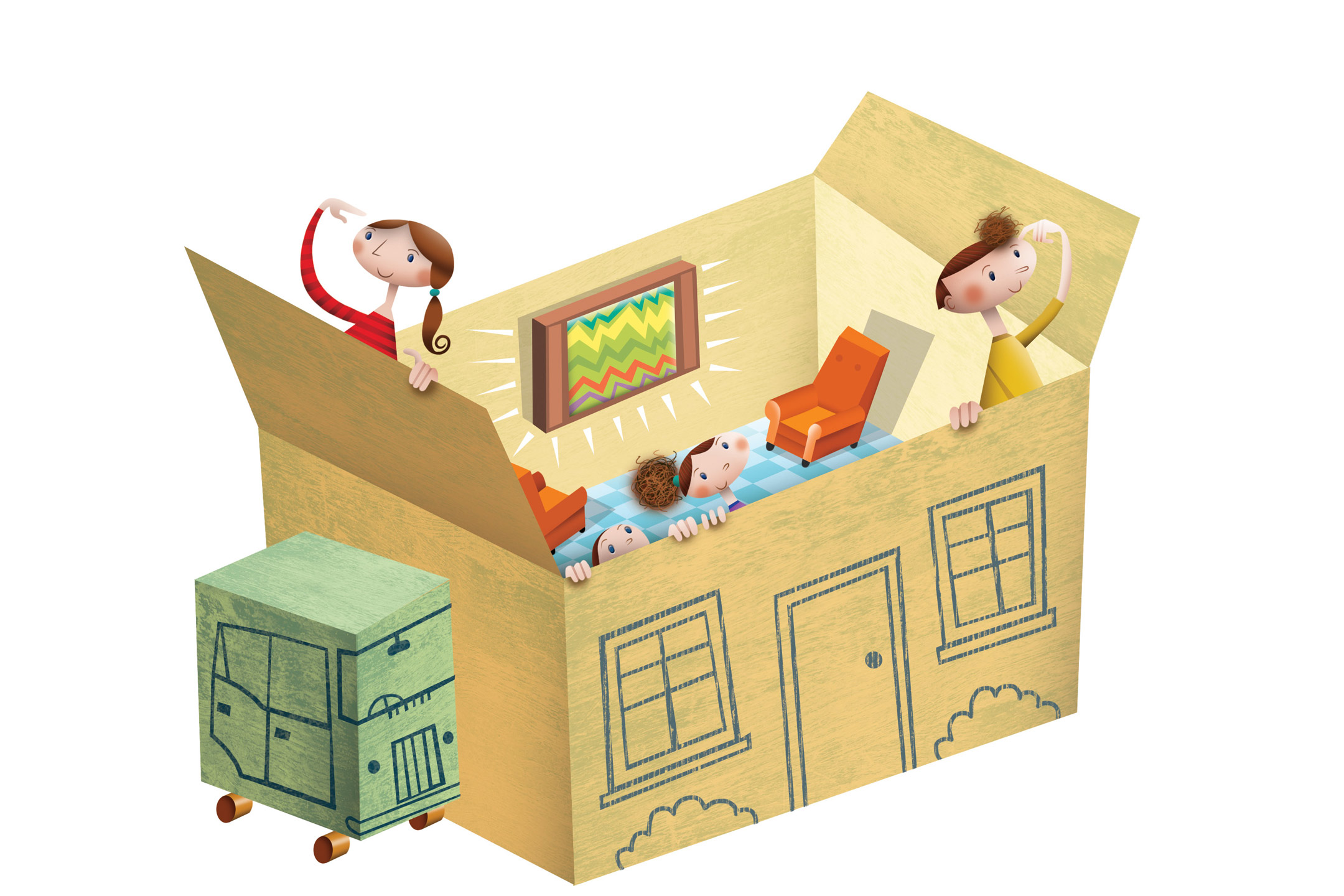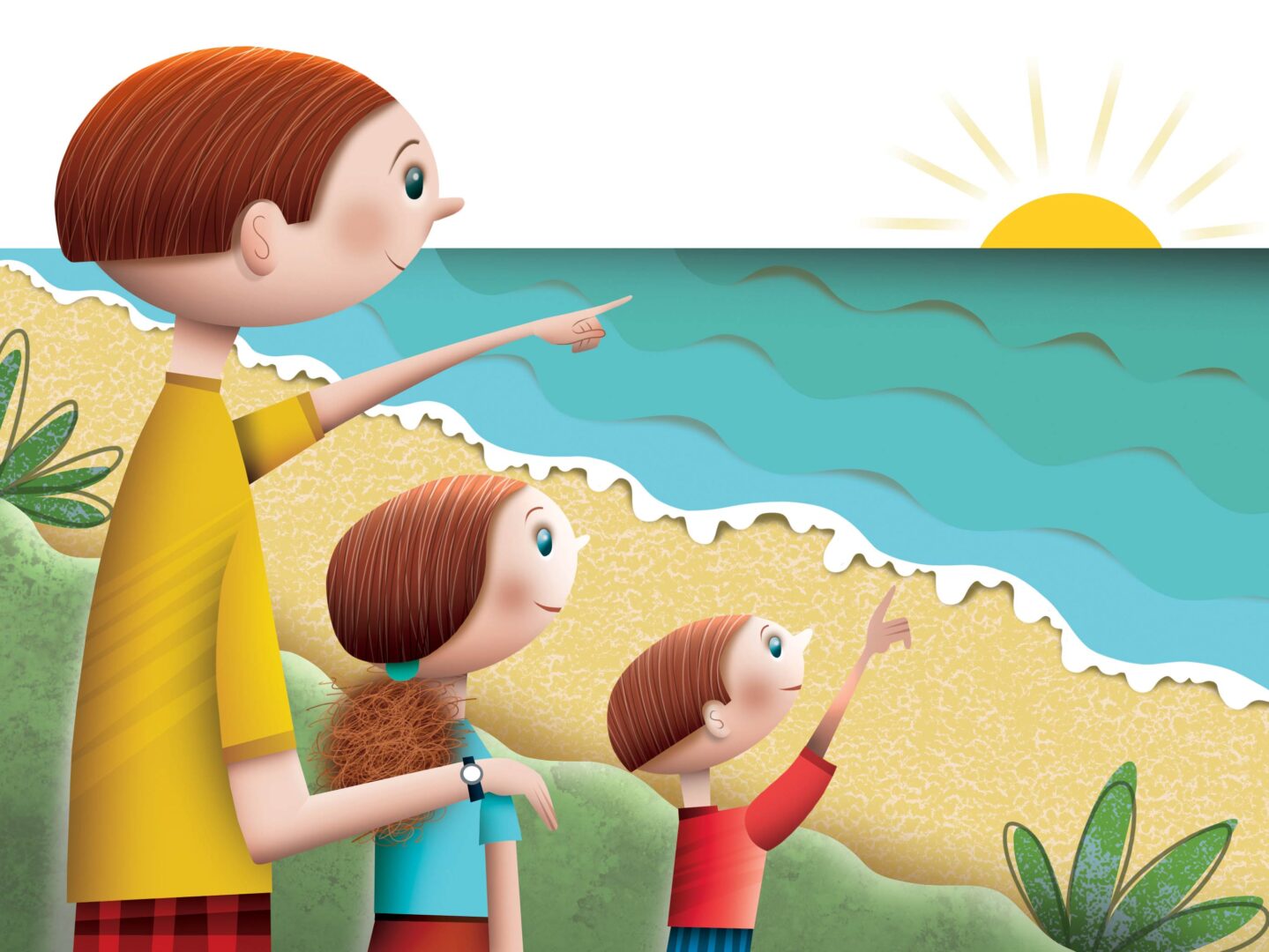
14 Mar Breaking Out Of Our Boxed Lives
It’s time to change the shape of our packaged lives, argues Professor Rob Moodie.
Quite a while ago, our family of four moved back from Switzerland to Australia, as I had changed jobs from the United Nations (where I was running the Division of Country Programs of the Joint UN Program on AIDS) to VicHealth, the Victorian Health Promotion Foundation. In Geneva, our two children had walked to school virtually every day of the three years we were there, yet when we got back to Melbourne, walking to school seemed far less ‘the done thing’.
I wasn’t long into my new job when Professor Kerin O’Dea, one of Australia’s leading experts in nutrition and activity, came to see me to encourage VicHealth to take action to counter the rising levels of overweight and obesity and the declining levels of what she called incidental activity – the physical activity (walking, lifting, carrying) involved in our daily lives.
It did concern me then, as it still does, that somehow we’d got this wrong in Australia and that the notion of the fit ‘bronzed Aussie’ had become more myth than reality. We had become, as the joke goes, like a football grand final, where 100,000 people who need more exercise watch 36 who don’t.
Keeping Australians physically active, particularly Australian children, has become much more than a passing concern in my daily life.
It isn’t an easy task to increase our national levels of activity and reduce our energy intake because our lifestyles have changed quite dramatically over the past 30 years. However, we are very lucky to be in Australia, where open spaces abound, often with wonderful surrounds, and where we are now being encouraged to make the most of them.
Life has changed a great deal. At an extreme, we could think of ourselves as spending our lives in boxes. Our home is a box, and we spend an inordinate amount of time watching screens on boxes. Every day, most of us hop into a box on wheels and then drive to another big box for school or work. We get out and hop into another box that moves up and down inside the big box. After it goes up, we walk a short distance and plonk ourselves in front of another box with a screen on it. We spend the great majority of our time being inactive, increasingly glued to a chair or a couch and out of touch with the natural world around us.
So much physical activity has disappeared from our lives.
Let’s take walking to school. Warm and sunny Australia, unlike the much colder northern Europe, has so embraced the car that we have reversed trends so that only 30 per cent of children are walking to school, less than half of the proportion who were doing so in the 1980s.
There are real and legitimate challenges in getting our kids to school as actively as possible or in getting them to play in the neighbourhood. Time, convenience and fear of accidents and abduction are some of the things that can get in our way. But we can overcome these by joining a ‘walking school bus’, and encouraging our children to walk or cycle or catch public transport with others to school. Some parents who do have to drive their children to school have come up with the great idea of parking the car half a kilometre or more away from the school and then walking with their kids to school.
Having walked with a number of groups of children on their way to school, I have been really impressed with the energy and vitality of the children. They say that what they love about walking to school, as much as the exercise, is the opportunity to connect with other kids. And the teachers have often mentioned how the children are much more “lesson ready” after some exercise in the mornings.
This decline in physical activity has unfortunately coincided with the arrival of the technology that allows us to produce energy-dense junk food and drinks – and the ability to promote them. So, now, one in four Aussie children is overweight or obese, compared to half that in the mid-1980s. The Preventative Health Task Force was established to originally provide a roadmap to make Australia a healthier country by 2020. They said that the “trends predicted that [because of obesity] the life expectancy for Australian children alive in 2009 will fall two years by the time they are 20 years old, representing life expectancy levels seen for males in 2001 and for females in 1997.”
This is an awful legacy for us to be leaving our children.
Very recent research shows that not only do we need activity, but that we should limit the time we spend being inactive. When we are inactive for too long, we start depositing fat and become resistant to insulin, thus increasing our chance of developing diabetes. So activity is not only beneficial, but high levels of inactivity can be harmful.
Whether it’s heart health, lung health, musculoskeletal health and even mental and psychological health, then physical activity is the go. I can never see technology helping us here – a pill will never be able to replace the need to ‘move it or lose it’. Simply put, our bodies are designed to be exercised, so the more effectively and the earlier we can teach our children to enjoy physical activity, then the better it is for their short and long-term wellbeing.
So what are the opportunities for physical activity? Despite the pressures of our modern lives, parents and children have lots of opportunities to be physically active.
Active, creative play is our children’s way of learning early how to understand the world around them and to get on with others. It also generates the activity that enables their young bodies to grow well.
Getting our children as active as possible on the way to school is a great way to start. It covers two things at once—transport and exercise—and, of course, walking and cycling are much better for the environment. If we could get 80 to 90 per cent of primary-school children walking or riding to school, there would be millions fewer trips on Australian roads every day. How good would that be for a lighter carbon footprint?
There has been much discussion about organised sport and its value for children.
As someone who has benefited from sport and seen my children benefit from it, I am convinced that we need to distinguish between good sport and bad sport. What I would call bad sport is characterised by the exclusive ‘pick the best and to hell with the rest’ approach. On the other hand, good sport gives everyone a go, values fun, fitness and friends, as well as the development of skills, and teaches our children (and maybe us as well) how to win and lose with grace.
In particular, team sports, although sometimes maligned because of the focus on winning and being the best, can be great ways for children to learn to work together, accept each other and learn from each other – all skills that can become very handy in workplaces later in life.
According to Deakin University’s Associate Professor Mardie Townsend, one of Australia’s leading researchers into the value of our contact with nature, there are other reasons why we should be outdoors as much as possible. Appealing natural environments have a calming effect, reducing stress, blood pressure, and even cholesterol levels.
 One of the other great benefits all these activities can provide is the chance to strengthen our relationships with our children. There is nothing better than sharing things we enjoy and teaching our children about them. One of the strongest, most wonderful memories of my childhood is of walking up over the sand dunes with my dad and brothers early one morning during a summer holiday trip. The warming glow of one of Australia’s stunning, deserted beaches with the bluest of surf still enchants me.
One of the other great benefits all these activities can provide is the chance to strengthen our relationships with our children. There is nothing better than sharing things we enjoy and teaching our children about them. One of the strongest, most wonderful memories of my childhood is of walking up over the sand dunes with my dad and brothers early one morning during a summer holiday trip. The warming glow of one of Australia’s stunning, deserted beaches with the bluest of surf still enchants me.
Finding your own special place, whether it is in the neighbourhood, on a beach, on top of a mountain, or gliding down a river, and sharing that with your children is certainly one of the great gifts of parenthood.
Rob Moodie is a Professor of Global Health at the University of Melbourne’s Nossal Institute and was the chair of the Preventative Health Task Force.
Illustrations by Shane McGowan




